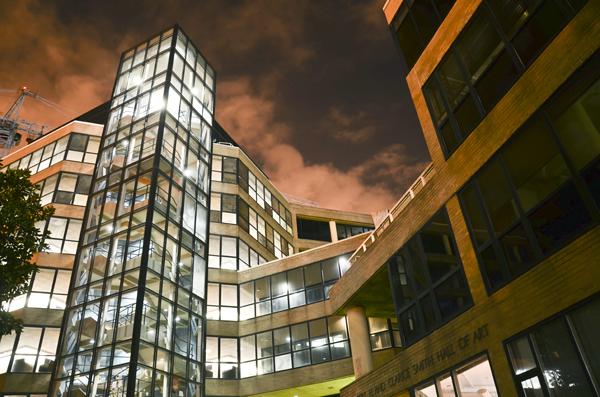Students in the Columbian College of Arts and Sciences will now be able to apply credits earned outside of GW to fulfill G-PAC requirements.
Faculty approved a resolution Friday that will allow AP or IB classes or courses taken at other institutions to count toward G-PAC, in an effort to attract students and cut back on the number of restrictions the college imposes on students’ schedules. It would also take down some barriers to completing a degree — a major goal of the University’s strategic plan.
Carol Sigelman, the chair of the psychology department, said the changes will put the Columbian College, GW’s largest school, in line with other undergraduate programs at GW.
“By requiring that they take our courses, we might make GW less attractive as a University to some students who want to be able to count a lot of their AP credits,” she said.
The change will apply retroactively to all current students within the college. They will also no longer be limited to taking a maximum of 18 credit hours from other schools at GW.
Students starting at GW this fall will be limited to three health and wellness courses to count toward the 120 credits students need to graduate, as well, which was not previously the case.
Current seniors made up the first full class of Columbian College students that had to fulfill G-PAC requirements. The new system requires students to complete fewer mandatory courses to graduate.
While students have been able to count the AP and IB credits they earned as electives, they haven’t been able to count them toward specific requirements, like they do at other schools.
When the college’s curriculum first launched in 2011, there was an emphasis on making sure students would take as many classes at GW as possible. Edward Berkowitz, a professor of history, public policy and public administration, said that system may have disadvantaged students.
“The present structure of G-PAC courses has skewed student course selection in ways that might not be in the student’s best interests,” Berkowitz said.
David McAleavey, an English professor and member of the Faculty Senate, said when the G-PAC requirements were developed, a goal was for the G-PAC classes to be unique so that they couldn’t be replaced by other courses, such as similar options in the AP or IB curricula.
By requiring students to take more classes at the University, officials hoped to better shape the type of education students receive, he said.
“The more courses at GW, the more fully the diploma reflects the GW experience,” he said in an email.
When GW approved the strategic plan about two years ago, officials aimed to cut down on the number of restrictions students faced when attempting to earn their degrees. By allowing students to take more courses in different colleges, they also hoped to spur interdisciplinary learning.
“I’m sure that CCAS’s restrictive G-PAC requirements have turned out to be an obstacle to student freedom of choice, and so I suppose that is one basic factor driving this curricular reform,” McAleavey said.
Students will now be able to take more upper-level courses during their time at GW, as well as more electives, he said, adding that the changes give students more freedom when planning out their four years.
“Students will be able to pursue their own interests and attend to their own individual intellectual growth more completely,” he said. “No one has changed the number of hours that students still need to earn their degrees, and almost certainly most students will continue to stay at GW for four years, as they did before the G-PAC was adopted a few years ago.”







